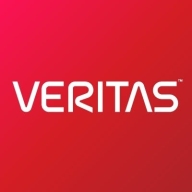

Check Point Security Management and Veritas Alta SaaS Protection are leading solutions in network security and data protection, respectively. Check Point is praised for its feature-rich environment, while Veritas is favored for its straightforward interface and integration capabilities but at a lower feature depth.
Features: Check Point Security Management stands out for its centralized logging, URL filtering, and the SmartConsole application, which facilitates easy management of security policies across a unified interface. It also excels with threat prevention policies, including antivirus and intrusion prevention. Veritas Alta SaaS Protection is recognized for its simple backup and recovery processes, seamless integration with major cloud platforms, and easy administration. However, its features are not as comprehensive as Check Point's security capabilities.
Room for Improvement: Check Point Security Management needs to improve its client interface's user-friendliness and multi-platform support. Enhancing the integration of legacy features and refining policy management are also necessary. Veritas Alta SaaS Protection could benefit from more flexible backup options, improved database recovery processes, and overall performance enhancements. Competitive pricing also remains a concern for some users.
Ease of Deployment and Customer Service: Check Point is acknowledged for its widespread use in varied environments, such as On-premises and Hybrid Clouds, though the quality of support varies by region. Veritas provides flexible deployment options across Public and Hybrid Clouds with generally favorable support feedback, though some users encounter difficulties in pricing negotiations and renewals.
Pricing and ROI: Check Point is viewed as a premium-priced product, justified by its robust features and integration simplicity, albeit requiring a large budget commitment. Users note positive ROI via time savings and enhanced security. Veritas is considered mid-priced with reasonable licensing, but users in currency-sensitive regions feel the pricing pressure. Both solutions are regarded as worthy investments with potential significant ROI based on organizational requirements and deployment scale.


Check Point Security Management is an advanced security management platform for enterprises. The platform integrates all aspects of security. A single platform manages the entire infrastructure, from data centers to private/public cloud deployments.
Check Point Security Management is a reliable and easy-to-use security platform. It integrates all aspects of your security environment to strengthen the security posture without impairing productivity. The system has a layered policy model. This means the security policy can be separated into layers for network segmentation. Different administrators can manage different policies. The policy layer automates the tasks.
The platform is extensible, scalable, and integrates easily with orchestration systems and change management.
Basic Components of the Infrastructure
The smart console offers several advantages. Changes in security policies and logs can be done with a click. You can navigate from an item within a log to the policy. There are also built-in multi-language support and accessibility features.
1. Security Management Server: The server manages security gateways with set security policies and monitors security events on the network.
The automation server is an integrated part of the management server. The API server is active by default on servers with 4 GB of RAM or more and on standalone servers with 8 or more GB of RAM.
The automation server communicates with the management server the same way as the Smart Console. This architecture allows the same validation errors and warnings to be presented when using an automation session.
The same audit logs generated using the Smart Console are also generated using an automation session. If you have a multi-domain environment, there is only one automation server that monitors all the IP addresses of the multi-domain management server.
2. Security Gateway is placed at the edge of the network. It monitors and filters traffic and enforces security policies.
Logging, Event management, and Monitoring
With Check Point Security Management, logging, reporting, event management, and monitoring are integrated. The platform features widgets and chart templates that optimize visibility. One of the best features is the one-click exploration. This simplifies going from a general overview to specific event details.
Benefits of Check Point Security Management
The unified console also means a single policy for users, data, applications, and networks. The granularity control helps accelerate administration processes. This feature, together with automation, is key to achieving reduced operational overhead. Security teams can automate tasks and even create self-service security web portals with the Check Point Security Management platform.
Threat management is fully integrated, with reporting, logging, and monitoring all in one dashboard. This provides full visibility into the security of the network.
Security Management Suite
The Security Management Suite consists of the following modules:
Reviews from Real Users
A Network Security Engineer/Architect at a tech services company says, "The features we like and find the most valuable are the ways we can manage the policy, create objects, and drag and drop objects in our daily operation. It makes our daily operation on the firewall management much easier than going, for example, to one firewall, then going to the other."
"The management API is the best new feature for me. It allows us to further automate our customers' automated server ordering," says a System Engineer Network & Security at OTTO GmbH & Co KG.
A Senior Infrastructure Services Specialist at St.George Bank Limited adds that "The solution is ideal for use and deployment in a large infrastructure environment."
Veritas Alta SaaS Protection is a comprehensive cloud-to-cloud backup and recovery solution designed to protect critical data and applications in Software-as-a-Service (SaaS) environments. With the increasing adoption of SaaS applications like Microsoft Office 365 and Salesforce, organizations need a reliable and efficient way to safeguard their data from accidental deletion, malicious attacks, and other data loss scenarios.
This product overview will highlight the key features and benefits of Veritas Alta SaaS Protection. Firstly, it offers automated and continuous backup of SaaS data, ensuring that organizations can easily recover lost or corrupted data with minimal downtime. The solution supports a wide range of SaaS applications, including email, calendars, contacts, files, and collaboration platforms.
Veritas Alta SaaS Protection provides granular recovery options, allowing users to restore individual items, folders, or entire applications as needed. This flexibility ensures that organizations can quickly recover specific data without the need for a full system restore. Additionally, the solution offers point-in-time recovery, enabling users to restore data from a specific date and time, further enhancing data protection and compliance requirements.
Another key feature of Veritas Alta SaaS Protection is its advanced security capabilities. The solution encrypts data both in transit and at rest, ensuring that sensitive information remains secure throughout the backup and recovery process. It also provides multi-factor authentication and role-based access controls, allowing organizations to enforce strict access policies and prevent unauthorized access to their SaaS data.
Furthermore, Veritas Alta SaaS Protection offers a user-friendly interface and intuitive management console, making it easy for organizations to configure and monitor their backup and recovery processes. The solution provides comprehensive reporting and auditing capabilities, allowing administrators to track backup status, monitor storage usage, and generate compliance reports.
We monitor all Advanced Threat Protection (ATP) reviews to prevent fraudulent reviews and keep review quality high. We do not post reviews by company employees or direct competitors. We validate each review for authenticity via cross-reference with LinkedIn, and personal follow-up with the reviewer when necessary.